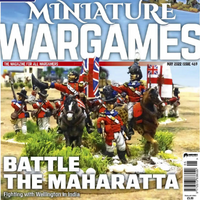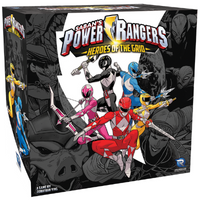02 March 2022
|
A game of two halves
For an attacker there are both advantages and disadvantages to a dawn attack. An attacker will have the advantage of darkness to cover his approach. This in turn may allow him to take an unsuspecting enemy by surprise. However, movement by night brings its own problems. Firstly, there is the difficulty of navigation. A wrong turn may lead to the whole operation failing or the attacker turning up as dawn breaks somewhere quite different from where he had planned. With a large force one part may get separated from another and arrive late, in the wrong place or not at all.
Despite these obvious hazards there is much to be said for a dawn attack. The enemy may well be caught unawares, the sentries dozing and the troops that are up going about their mundane activities. The obvious disadvantages of being attacked unawares at dawn may lead commanders to “stand to” their men. That is to have them alert and ready as dawn approaches every day. “Stand to” is a relatively modern expression, probably shortened from an earlier military dictionary definition, “To stand under arms means to be ready for action”.
BACKGROUND
The scenario is set during the Seven Years War in the Western Theatre. This theatre involved the Allied Armies, consisting of British, Hanoverian, Hessian, Prussian and Brunswick, against the French and Saxons. The scenario uses appropriate troops all manufactured by Crann Tara Miniatures. However, it can easily be adapted for most horse and musket armies and is particularly appropriate from the French Indian Wars or American War of Independence.
The French (Blue Force) have occupied a rural area, deploying troops to garrison the villages and towns. The Allies (Red Force) in this case a British contingent has been tasked to mount offensive operations to drive back the French.

TERRAIN
To the west is the edge of a large wood through which two forest tracks emerge joining at the village and heading east. These two tracks come from a single track deep in the wood which divides off the map. The village of Klein Badeborn is a small farming village. Following the single road from the village east there is a 'Y' junction with a small group of trees and farm cottage. Following the road south east there is the hamlet of Badeborn.

RED (ALLIES) ORDERS
Note the following:
SITUATION
You command two units, one of Highlanders and one of Converged Grenadiers tasked with operating against the French (Blue),
MISSION
Your mission is to take and hold the village of Klein Badeborn.
FORCES
Your brigade consists of the following:
- One battalion of Highlanders (or Converged Grenadiers).
- One battalion of Converged Grenadiers.
OTHER FACTORS & LIMITATIONS
At the start of the game dice for which road your two units will appear from. The plan was to appear at A. The two units have moved in column of march, one behind the other. If the result is 1,2, 3 or 4 the first unit will appear at A, while with a 5 or 6 it will appear at B. It is possible that the second unit became separated. Throw a D6 and if the result is 3, 4, 5 or 6 the second unit will take the planned rout and appear behind the first unit. If it is a 5 or 6 they will take the other rout and appear on move 4.
You can expect a counter attack and must seek to take control off the village and prepare to defend it as quickly as possible
VICTORY CONDITIONS
To be successful you must capture and hold the village of against any counterattack.

FRENCH (BLUE) ORDERS
Note the following:
SITUATION
Your force is concentrated at Badeborn but with an outpost at Klein Badeborn.
MISSION
To hold Klein Badeborn and expel any enemy attempt to take and hold it.
FORCE
Your main force based in Badeborn consists of:
- Four regiments of infantry.
Note that you have detached half of one of these regiments to the village of Klein Badeborn.
OTHER FACTORS & LIMITATIONS
The sound of firing from Klein Badeborn will alert your main forced to the attack on your outpost. It will take two moves to prepare them to march. You must leave a half regiment to garrison Badeborn.
VICTORY CONDITIONS
To be successful you must retake the village of Klein Badeborn.

UMPIRE CONSIDERATIONS
Following the above instructions there is no requirement for an Umpire.
POSTSCRIPT
Those that know me know I favour the big battalions, generally with infantry units of 48 figures. However, for this scenario, on a small table, I have reduced the battalion size to 24 figures. On a larger table I would revert to my full strength battalions. Those familiar with the period I chose will also note that, to keep it simple, I did not use battalion guns.
I played through this scenario twice, with these results:
FIRST RUN
On the first occasion the second unit took the wrong turn and arrived late at B. This played to their advantage as the defenders were occupied to their front and had no troops left to cope with the attack from the north. The defenders, now attacked on two fronts, were quickly overwhelmed which gave the attackers the opportunity to organise their defences and deploy the battalion guns. They were ready when the French reinforcement columns appeared from the direction of Badeborn. The French advanced in three columns with the left hand column swinging around to attack the south face of Klein Badeborn while the other two advanced on the east side.
Both of these battalions deployed into line so that they could fire as they advanced. Their progress was slow and they suffered heavily from the fire of the Grenadiers in the village. The flanking attack had some success, even getting men over the wall, but the timely arrival of a company of grenadiers made short work of them and Klein Badeburg stayed in Allied hands.

SECOND RUN
On the second run through both the Allied units arrived on the same road at A but that meant that the first unit had to deploy clear of the wood before the second could deploy. The defenders were alerted and the Highlanders suffered considerably before they could close with the village. Eventually, reinforced by the grenadiers, they cleared the village and rounded up a few prisoners. The action had seriously reduced the Highlanders and the fresh French infantry regiments were able to take advantage of the delay in clearing the village and the depleted Allied force. After a brisk fight the French were able to retake Klein Badeborn.

CONCLUSION
As I indicated at the start, this scenario lends itself to almost any 18th Century theatre. It is quick to set up, does not require large forces and no umpire is required. Finally, it provides a balanced game which could go either way.
Looking for more?

This scenario was one of many that appears in Miniature Wargames Magazine, our monthly publication for all kinds of wargames! You can check out our latest issue, or previous issues by clicking here
Get your magazine hereOne Day, One Whole Army...

If you have a stack of miniatures in need of painting, preventing you from bringing anything new to the table, check out this article, where we hear from a contributor who managed to paint an entire army in a single day!
Get your paint on!
Join us in person

We can't wait for Tabletop Gaming Live 2022! An epic weekend in Manchester full of board games, card games, roleplaying games, wargames and more, with amazing exhibitors, great games, and an opportunity to game together in person.
See you there!Treat Yourself!

Have you visited our game store? We have everything from mystery boxes, to games and accessories – including the above Power Rangers: Heroes of the Grid, with a great discount! Head over to find your new favourite game.
Visit the Game Store
Sometimes we may include links to online retailers, from which we might receive a commission if you make a purchase. Affiliate links do not influence editorial coverage and will only be used when covering relevant products







